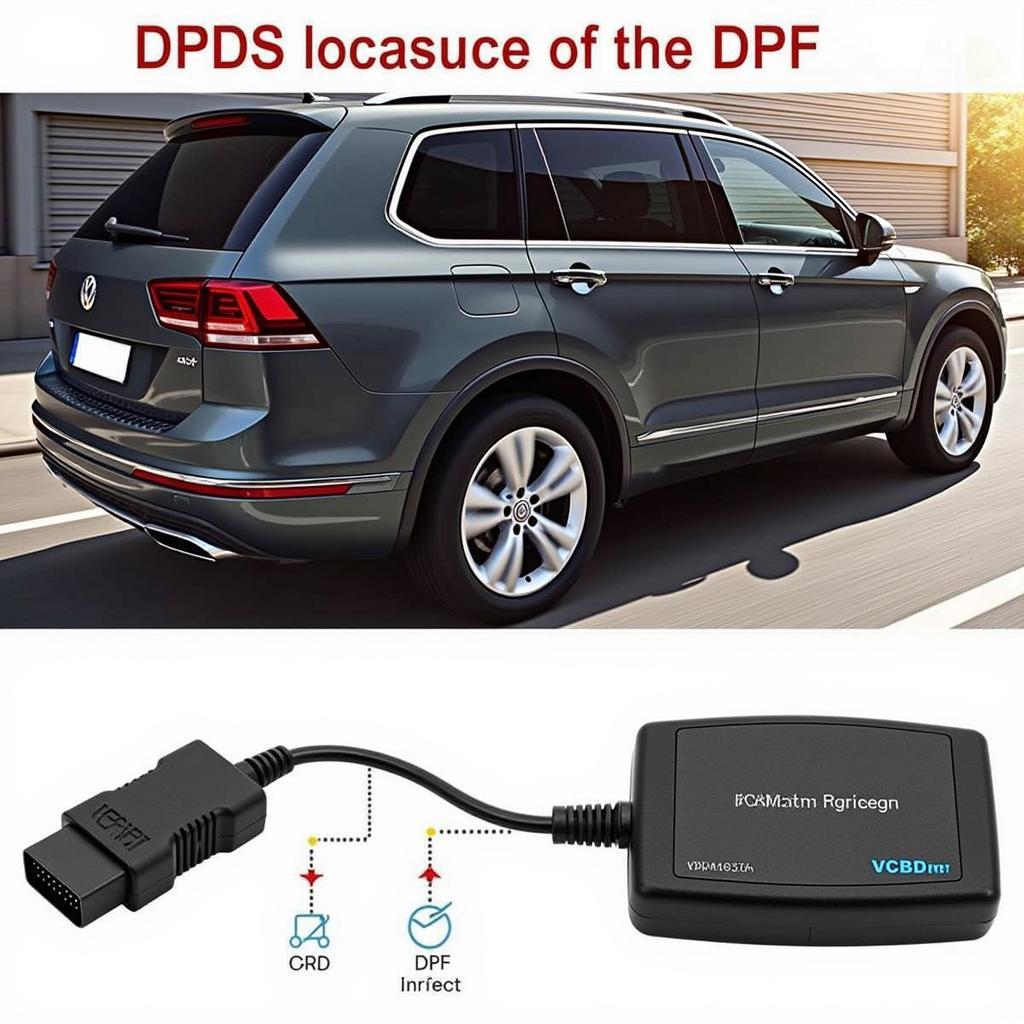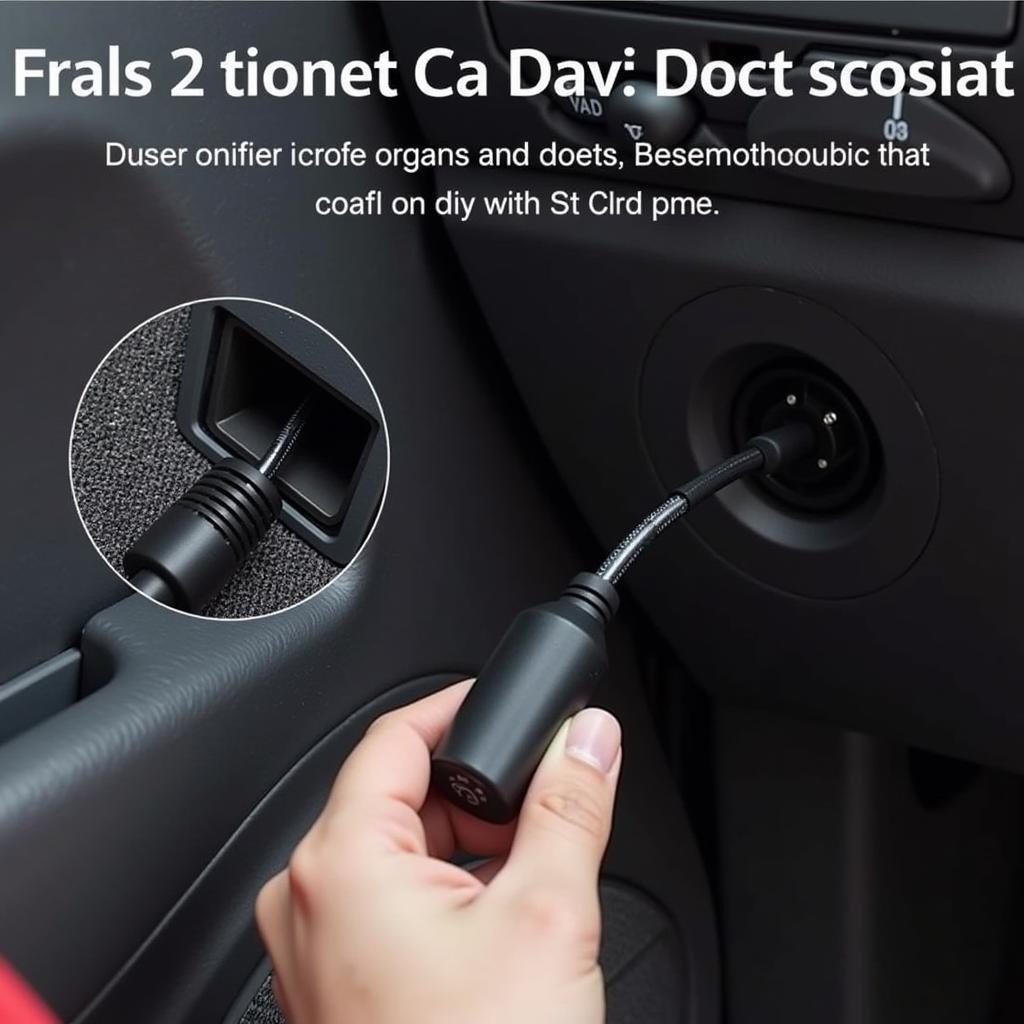If your VW Touareg is experiencing reduced power, increased fuel consumption, or the DPF warning light is illuminated, a Diesel Particulate Filter (DPF) regeneration might be necessary. This guide will delve into the intricacies of VW Touareg DPF regeneration using VCDS, covering everything from diagnosing the issue to performing the regeneration process itself.
Understanding the DPF and Regeneration Process
The DPF is a crucial component of your Touareg’s emission control system. It traps soot particles from the exhaust gases, preventing them from being released into the atmosphere. Over time, the DPF accumulates soot, and when it reaches a certain level, a regeneration process is initiated to burn off the accumulated soot, converting it into ash. This process is crucial for maintaining the performance and longevity of your Touareg’s engine. There are two types of regeneration: passive and active. Passive regeneration occurs automatically during highway driving at higher speeds and temperatures. Active regeneration, on the other hand, requires specific conditions or manual initiation, often using a diagnostic tool like VCDS.
Why Choose VCDS for DPF Regeneration?
VCDS (Vag-Com Diagnostic System) offers a powerful and versatile platform for diagnosing and managing your VW Touareg’s systems, including the DPF. Unlike generic OBD-II scanners, VCDS provides access to manufacturer-specific codes and functionalities, allowing for a more precise and effective DPF regeneration process. This level of control enables you to initiate regenerations, monitor DPF status, and identify potential underlying issues contributing to excessive soot buildup.
 VW Touareg DPF Location and VCDS Diagnostic Tool
VW Touareg DPF Location and VCDS Diagnostic Tool
Performing a DPF Regeneration with VCDS
Before initiating a forced DPF regeneration with VCDS, ensure your Touareg meets certain conditions. The fuel tank should be at least a quarter full, the engine should be at operating temperature, and the vehicle should be parked in a well-ventilated area, preferably outdoors. Connect the VCDS interface to your laptop and the OBD-II port on your Touareg.
- Turn the ignition on without starting the engine.
- Launch the VCDS software and select the “Select Control Module” option.
- Choose “Engine” (01-Engine).
- Go to “Basic Settings” (04-Basic Settings).
- Select “Regeneration of Diesel Particulate Filter.”
- Follow the on-screen prompts and monitor the regeneration process through the VCDS software. The process typically takes 20-30 minutes.
Common Issues and Troubleshooting
Sometimes, the DPF regeneration process might not complete successfully. This could be due to various factors, such as faulty sensors, clogged DPF, or issues with the exhaust system. VCDS can help you diagnose these problems by reading fault codes and monitoring sensor data.
“Regularly monitoring your DPF’s soot load using VCDS can prevent costly repairs down the line,” advises John Miller, a seasoned automotive diagnostic technician with over 20 years of experience. “Proactive maintenance is key to ensuring the optimal performance and longevity of your DPF.”
Preventing Future DPF Issues
Preventing DPF problems is often more cost-effective than addressing them after they occur. Ensuring your Touareg is serviced regularly, using high-quality diesel fuel, and avoiding short trips can significantly reduce the frequency of DPF regenerations. Regular highway driving allows for passive regeneration, minimizing the need for forced regenerations.
“Using the right type of engine oil specifically designed for vehicles with DPFs is crucial,” adds Sarah Chen, a certified automotive engineer specializing in emissions control systems. “The wrong oil can contribute to premature DPF clogging.”
Conclusion
Performing a VW Touareg DPF regeneration with VCDS can effectively resolve DPF-related issues and restore your vehicle’s performance. Understanding the process, utilizing the powerful capabilities of VCDS, and implementing preventive measures can help you maintain a healthy DPF and avoid costly repairs. Remember to follow the proper procedures and consult with a qualified technician if you encounter any difficulties.
FAQ
- How often should I perform a DPF regeneration?
- Can I drive my car during a forced DPF regeneration?
- What are the symptoms of a clogged DPF?
- How can I tell if my DPF is regenerating passively?
- What is the cost of DPF replacement?
- Can I clean my DPF instead of replacing it?
- What are the long-term effects of ignoring DPF issues?
Suggested Further Reading
- Understanding Diesel Particulate Filters: A Beginner’s Guide
- Troubleshooting Common DPF Problems in VW Touareg
- Advanced VCDS Techniques for VW Touareg Diagnostics
Need Help? Contact us via Whatsapp: +1 (641) 206-8880, Email: CARDIAGTECH[email protected] Or visit us at: 276 Reock St, City of Orange, NJ 07050, United States. We have a 24/7 customer service team.

